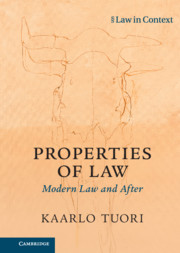Law and the Invisible Hand
A contemporary interpretation of Adam Smith's work on jurisprudence, revealing Smith's belief that progress emerges from cooperation and a commitment to justice. In Smith's theory, the tension between self–interest and the interests of others is mediated by law, so that the common interest of the community can be promoted. Moreover, Smith informs us that successful societies do at least three things well. They promote the common interest, advance justice through the rule of law, and they facilitate our natural desire to truck, barter, and exchange. In this process, law functions as an invisible force that holds society together and keeps it operating smoothly and productively. Law enhances social cooperation, facilitates trade, and extends the market. In these ways, law functions like Adam Smith's invisible hand, guiding and facilitating the progress of humankind.�
- A new, contemporary, and informative analysis of the work of Adam Smith
- Advances Smith's theory of jurisprudence and demonstrates its connection to his work on economics and social progress
- Develops new insights on Adam Smith that go beyond and counter stereotypical depictions of Smith as a promotor of greed and self-interest
Reviews & endorsements
'… the book is, as a whole, both a rigorous study of the work of Adam Smith and an ambitious experiment to refect, in the thought of a master of the past, tensions and contradictions of the present.' Luca Arnaudo, History of Economic Ideas
‘The overall analysis of this brief, yet compelling work is akin to revising the whole conception of Adam Smith on law and justice. Given the fact that Adam Smith did not develop a theory of jurisprudence, the task carried out by the author is an undaunted one, which duly deserves to be appreciated.’ Punsara Amarasinghe, Liverpool Law Review
Product details
November 2021Hardback
9781108836630
225 pages
236 × 159 × 17 mm
0.44kg
Available
Table of Contents
- 1. Introduction: law's invisible hand
- 2. Setting the stage
- 3. Social organization in the informal realm
- 4. Social organization in the formal realm
- 5. Integrating the informal and formal in Smith's theory
- 6. The spectator view
- 7. Judgment and justice
- 8. The sentiment of common interest
- 9. The impartial spectator, homo-economicus and homo-identicus
- 10. Understanding the four stages of progress
- 11. Adam Smith in American law
- 12. Parting thoughts.











